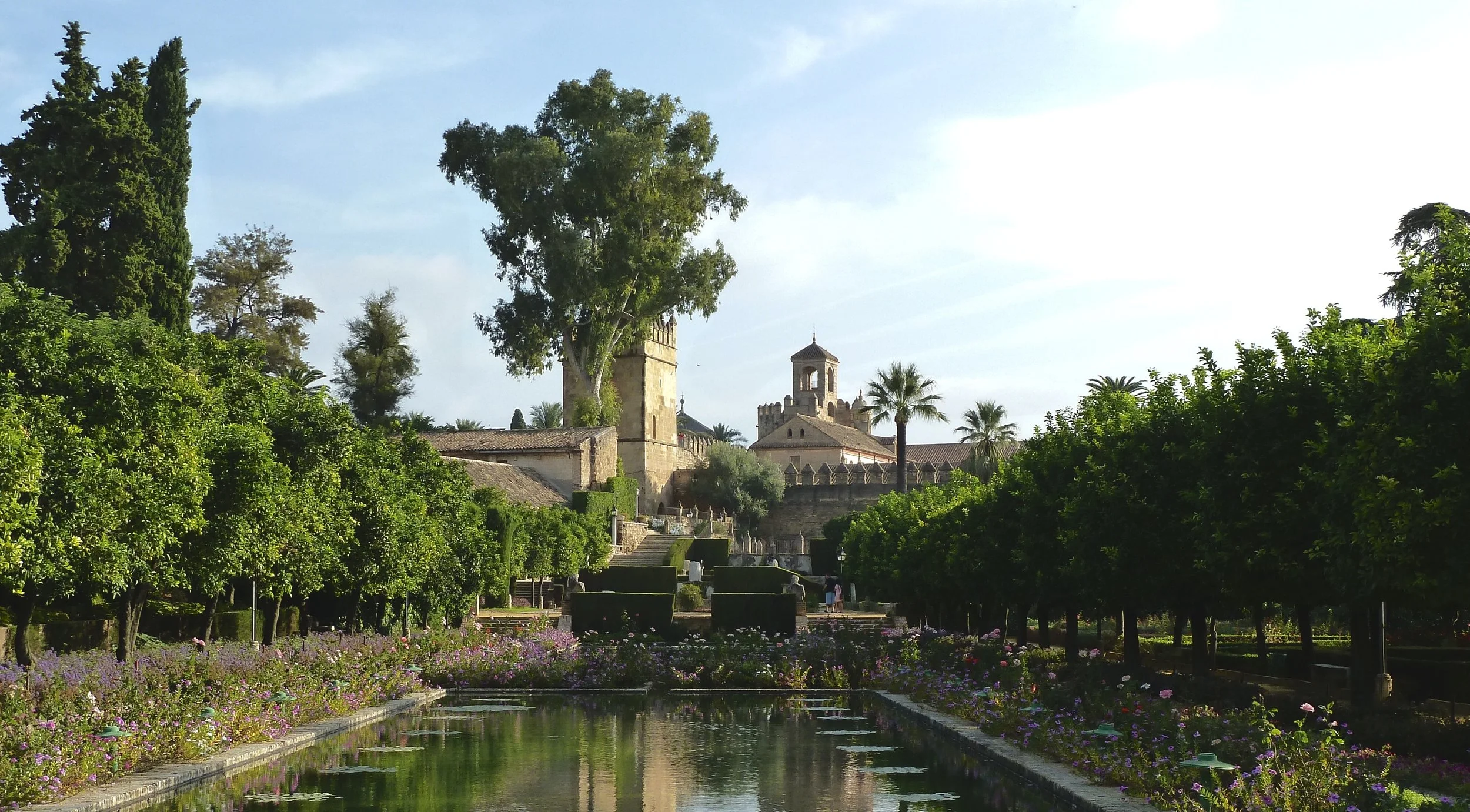Still Places #2 : The Garden Through Time
All Text & Images: Dom Galloway | GardenSpace (unless otherwise noted)
Across civilizations and centuries, the idea of paradise has often taken the form of a garden. Step beneath a canopy of leaves after the glare of the sun; hear water’s gentle trickle; catch the sweetness of blossoms on the air. Whether lush and enclosed or open and flowing with rivers, the sacred garden has always stirred something deep within us—not just admiration for beauty, but a feeling of safety, renewal, and quiet joy. These visions of paradise reflect a longing for balance: between humans and nature, body and soul, earth and the unseen.
Jardines del Alcazar, Cordoba Spain
In Judeo-Christian tradition, the Garden of Eden is more than a story—it is a landscape that lingers in the imagination. Fruit hangs heavy on branches; grass springs beneath bare feet; the Creator walks beside humankind in easy conversation. Though Eden is lost, its image endures: a memory of wholeness, a dream of peace, a reminder that harmony is possible. Each garden, in its own way, carries an echo of this first, unbroken home.
In Islamic culture, the jannah described in the Qur’an comes alive with scent and colour: pomegranate, date palm, and citrus; and always the shimmer of water weaving through stone channels. Shade falls in cool squares across tiled paths. Beauty here is not only for delight but a reward for faith and endurance. Islamic gardens give this vision form: symmetrical courtyards divided by rills of water, the air cooled by trees whose leaves murmur in the wind. These spaces invite slow walking, quiet gratitude, and remembrance.
In the East, Buddhist temple gardens offer a more restrained vision of paradise. They focus and calm rather than overwhelm the senses. Raked gravel catches shifting light; moss grows in soft mounds between stones; a pond mirrors the sky until a fish disturbs its surface. These gardens do not promise a return to a lost perfection but reveal the perfection already here. They are landscapes for meditation, where the spirit steadies itself in the rhythm of breath and the stillness of stone.
Across traditions and time, the garden’s work is the same: to bring the visitor into a place where the world feels whole, where beauty leads to reflection, and reflection to peace. Whether lush or austere, the garden draws a line between the ordinary and the sacred. Crossing that line, even for a moment, shows us life can be lived in balance.
“To plant a garden is to believe in tomorrow.” - Audrey Hepburn
This need may be more fundamental in the modern, secular world. Even without religious framing, people still seek the quiet promise a garden offers. In the noise of cities, a patch of green can feel like a breath held and released. The shimmer of leaves after rain, the slow unfurling of a bud, the scent of warm earth—these moments lift us into a different state of being.
Urban parks become shared sanctuaries where strangers rest side by side, letting their eyes settle on green instead of concrete. Community gardens echo the temple courtyard, offering not only food but connection, care, and a return to seasonal rhythms. Private gardens, however small, become spaces for personal ritual: watering at dusk, pruning in the cool of morning, kneeling in soil as a kind of prayer.
In tending these spaces, we restore ourselves—soothing the restless mind, easing grief, and recovering the capacity to be present. The garden is still a temple, though its walls may be hedges and its altar a patch of sunlight on grass. It continues to answer an ancient need: to feel part of something larger, more enduring, and more beautiful than ourselves.
Even in a secular age, the garden remains what it has always been: a place where the spirit—however we name it—can breathe.
If you’d like to begin creating such a space for yourself, contact us today.


